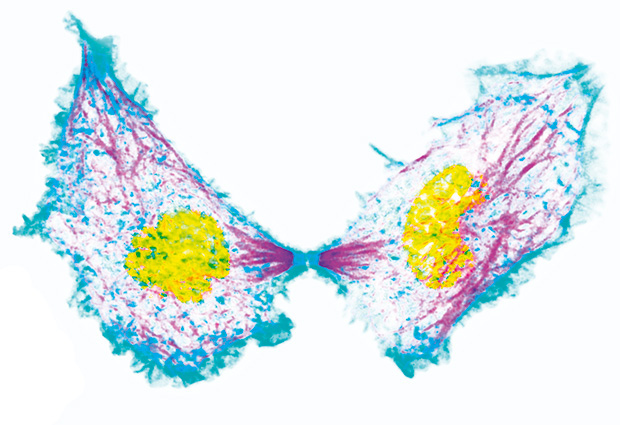
First, catch your DNA

Every time a cell divides to create two offspring cells, it has to carefully manage its genetic inheritance to ensure that each new cell ends up with their appropriate share. In most cases, the parent cell first duplicates its genome, and then parcels out half of this DNA (one full genome) to each of its progeny.
This process sounds simple, but it’s fraught with complications. One big issue the cell has to contend with is preventing the newly duplicated chromosomes that make up the genome getting tangled up, like loops of rope.
In the past few years, the lab of Christian Häring, Group Leader in the Cell Biology and Biophysics Unit at EMBL Heidelberg, has found that cells use a specialised protein complex called condensin to organise the stringy chromosomes so that they can be moved around the cell. Häring and colleagues have shown that when the cell needs to divide its genome up, condensin complexes form a ring around chromosomes and prevent the strands of DNA tangling up. If the condensin rings are artificially cut open, the cell still divides, but the chromosomes end up being split apart, with each daughter cell inheriting an unusable mish-mash of genetic material.
“We know that the DNA gets inside the condensin ring, but we also wanted to know how that happens,” says Häring. His lab has now got part of the answer, recently published in Nature Structural and Molecular Biology. To work out how DNA gets into the middle of condensin rings, Häring, working with his postdoc Ilaria Piazza, teamed up with Martin Beck, Group Leader in the Structural and Computational Biology Unit at EMBL Heidelberg, and postdoc Alessandro Ori, who have developed a technique called cross-linking mass spectrometry to map the architecture of multi-subunit protein complexes, such as condensin.
Answering these questions will keep us busy for the next couple of years.
Together, the scientists found that DNA binds to condensin through unusual DNA-binding sites on the protein complex. Unlike many other DNA-binding sites, the ones on condensin do not recognise specific sequences of DNA, and can bind anywhere on a chromosome. The team also found that when condensin binds DNA, this activates the enzyme portion of one of the condensin proteins, which seems to open up the ring to allow the DNA to enter (a hypothesis Häring says needs further confirmation). Then the ring closes up, leaving the DNA entrapped within the condensin ring.
Now Häring wants to unravel the precise mechanisms by which DNA binding causes condensin proteins to disengage so the ring can open, and then re-engage so that it closes tightly once the DNA is in place. “Answering these questions will keep us busy for the next couple of years,” says Häring.


